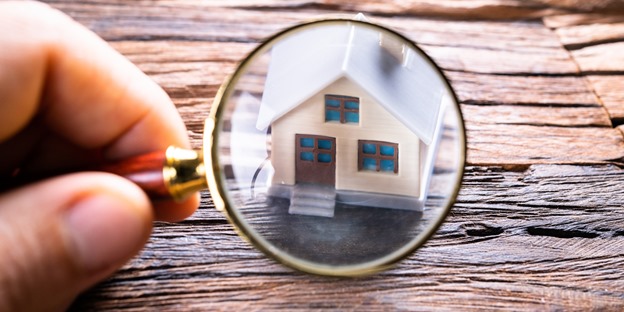Living in a home with mold can be a health hazard, yet many people are unaware of its presence or the risks it poses. That is why this guide contains the mold inspection process explained as it is crucial for every homeowner to know.
Mold can grow and spread in as little as 24 to 48 hours, making swift action essential when you suspect its presence.
But how exactly does a mold inspection work, and what should you expect?
Free Mold Inspections New Mexico is here to guide you along the way.
The Importance of Professional Mold Inspections
Before breaking down the process, it’s crucial to understand why professional mold inspections matter.
While DIY mold testing kits are available, they often fall short in providing a comprehensive assessment of your home’s mold situation.
And that is why professional mold inspectors from Free Mold Inspections New Mexico have the training, experience, and equipment to detect mold in hidden areas like attic spaces and accurately assess the extent of the problem for a proper mold remediation.
The Mold Inspection Process Explained: A Step-by-Step Guide
1. Initial Consultation and Visual Inspection
Your mold inspector will ask about any concerns you have, areas where you’ve noticed issues, and your home’s history with water damage or leaks.
The mold inspector may also inquire if you’ve had any plumbing leaks in the past.
Next comes a thorough visual inspection.
The mold inspector will carefully examine areas that may be potential sources of mold growth.
This includes checking walls, ceilings, floors, and even crawl spaces or attics for signs of mold growth, such as black mold.
2. Moisture Detection
Mold thrives in moist environments, so identifying sources of excess moisture is crucial.
Mold inspectors use specialized equipment like moisture meters and thermal imaging cameras to detect hidden water issues that might not be visible to the naked eye during the mold testing.
3. Air Quality Testing
A key part of the mold inspection process is air quality testing.
Inspectors use specialized air sampling equipment to collect samples of airborne mold spores, which helps to determine the relative moldiness in your home.
These samples are then sent to a laboratory for analysis to determine the types of mold spores present during the mold testing.
4. Surface Sampling
In addition to air samples in mold testing, mold inspectors may take surface samples from areas where mold growth is suspected.
This can involve swabbing surfaces or using tape lifts to collect samples for laboratory analysis.
Understanding Mold Testing Results
Once the samples are analyzed, you’ll receive a detailed report of the findings from the mold testing. This report will typically include:
- Types of mold present in your home.
- Concentration levels of mold spores.
- Locations where mold was found.
- Possible places of moisture which are contributing to mold growth.
However, a professional mold inspection can give you a general idea of the severity of your mold problem and recommend the best course of action.
When to Get a Mold Inspection
Understanding when to get a mold inspection is just as important as knowing the mold inspection process explained.
According to Free Mold Inspections New Mexico, here are some situations where a mold inspection is advisable:
- After water damage or flooding.
- When buying a new home.
- If you notice a musty odor.
- If you or family members experience unexplained allergic reactions or respiratory issues.
- Before selling your home.
The Health Risks of Mold
The importance of mold inspections becomes clear when you consider the health risks associated with mold exposure.
Allergic reactions, respiratory problems, and skin irritations are just a few of the potential health issues linked to mold exposure.
After the Inspection: Next Steps
Once you have the results of your mold inspection, what’s next?
If mold is found, your inspector will likely recommend a remediation plan.
It’s crucial to address any mold issues promptly to prevent further spread and potential health risks.
Preventing Future Mold Growth
While understanding the mold inspection process is important, preventing mold growth in the first place is even better.
Here are some tips:
- The use of a dehumidifier or air conditioner is advised to control humidity levels in your home.
- Fix leaks promptly, no matter how small.
- Run exhaust fans to ensure proper ventilation in bathrooms and even in kitchens.
- Clean and dry any water-damaged areas within 24-48 hours to prevent mold from growing.
- Consider using mold-resistant products in high-moisture areas like bathrooms.
FAQs about mold inspection process explained
How long does a mold inspection take?
A typical mold inspection can take anywhere from 2 to 6 hours, depending on the size of your home and the extent of the inspection.
Larger homes with more potential problem areas will take longer to inspect. .
Is it possible to stay in my home during a mold inspection?
Yes, you can typically stay in your home during a mold inspection.
However, the inspector may ask you to limit movement in certain areas while they’re working.
How often should I have a mold inspection?
If you don’t have any ongoing moisture issues or visible mold, an annual inspection is usually sufficient.
However, if you live in a humid climate or have had previous mold problems, more frequent inspections might be advisable.
Invest in Inspection, Reap the Rewards of a Healthy Home
Understanding the mold inspection process is crucial for maintaining a healthy home environment.
From the initial consultation to the final report, each step of the process plays a vital role in identifying and addressing potential mold issues.
Remember, while the cost of a mold inspection might seem high, it’s a small price to pay for peace of mind and the health of your family.
By staying vigilant, addressing moisture issues promptly, and getting regular inspections, you can keep your home mold-free and your family healthy.

